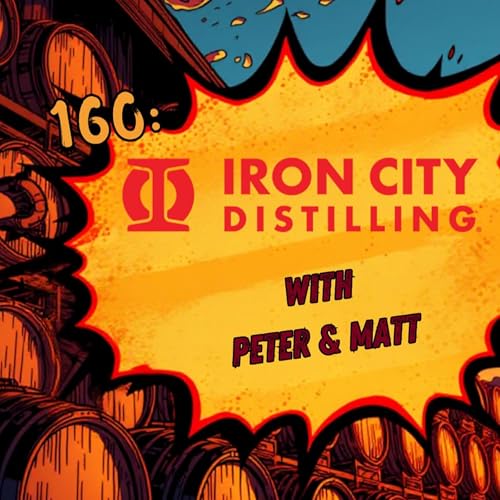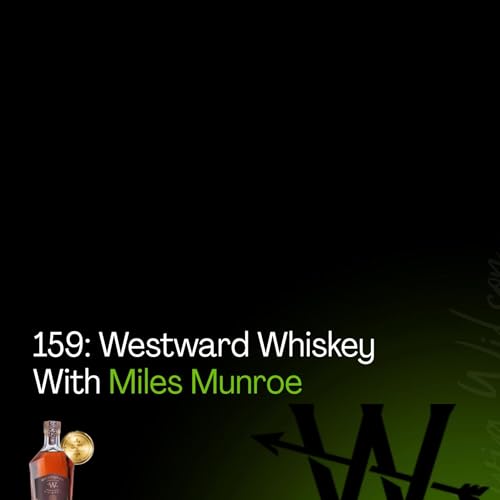I told yall we were gonna finish the last couple of the podcasts with banger after banger. For this show, we sat down with the master blender of Westward whiskey the creative genius behind all of there releases. Miles has an extensive background that we get into. But also this is a conversation of two whiskey lovers, sharing some life story. And they were gracious enough to send over a bottle of there Lamington Porter Cask finished, which is a Australia only release. Super stoked for you to listen and watch. Check the links down below for more content.
Westwardwhiskey.com
Patreon.com/the_whiskeyshaman
Badmotivatorbarrels.com/shop/?aff=3
https://www.instagram.com/zsmithwhiskeyandmixology?utm_source=ig_web_button_share_sheet&igsh=ZDNlZDc0MzIxNw==
————
A LEGACY THAT SPANS TWO DECADES
In over twenty years of whiskey-making, we’ve learned what it takes to create something unforgettable. Inspired by the beauty of the American Northwest, its pioneering spirit, and its rich culinary culture, Westward Whiskey is crafted to build peak flavor from the ground up. Our award-winning American whiskeys reflect a commitment to boldness, balance, and creativity.
WE ARE THE PINNACLE OF AMERICAN WHISKEY
——
We honor our home in every bottle. From the Columbia River Gorge to the slopes of Mount Hood, the American Northwest is woven into every step of our process.
This region offers one of the most fertile barley-growing climates in the world—an ideal place to craft world-class whiskey.
——
The Northwest has long attracted hardworking visionaries—people driven to build something better.
Our team of creators includes former brewers, winemakers, and Michelin-trained chefs with more than 50 years of collective distilling experience. Their passion and expertise push the boundaries of traditional whiskey-making.
——
There are no shortcuts in our deliberate process—and therein lies the beauty.
We blend the best of brewing, distilling, and aging traditions to create a whiskey like no other.
Brewed Like a Craft Ale
We start by brewing a full-flavored American Ale entirely from scratch. Using locally malted barley, ale yeast, and a slow, low-temperature fermentation, we build a bold and complex foundation for our whiskey.
DISTILLED LIKE A SINGLE MALT
That fresh ale is double-distilled in custom low-reflux pot stills designed to retain character and texture. This hands-on method transforms our flavorful brew into a robust and expressive spirit.
AGED LIKE A BOURBON
We age our whiskey in new American oak barrels—heavily toasted and lightly charred—to unlock layers of vanilla, spice, and fruit. Each barrel is carefully selected to enhance the richness and depth of our whiskey.
To showcase the full spectrum of earthy, fruity, and spicy flavors, we mingle our barrels in small batches to achieve Westward’s signature profile: layered, balanced, and unapologetically bold.
DISTINCT. RICH. BRAZEN. FULL OF FLAVOR.
Our Most Ambitious, Limited and Exclusive Whiskey
Available for Distillery Tasting Room pickup only
From our home in the American Northwest, our distillers have pushed boundaries as few dare, reimagining and elevating American whiskey for nearly two decades. We recognize that the whole can be greater than the sum of its parts, so we challenged ourselves to explore what the ultimate expression of Westward whiskey could be.
Westward Whiskey Milestone® represents our makers' knowledge and our full body of work, brought together into a single whiskey through a twenty-one barrel Solera system that includes some of our most precious whiskies. By far the most ambitious and exclusive whiskey we will ever craft, this forthcoming annual release is a masterpiece in American whiskey and a milestone for Westward. It reflects both the legacy of our past and the promise of our future.
Bottled at 43% ABV / 86 proof
 Jan 17 20261 h y 27 m
Jan 17 20261 h y 27 m Jan 10 20261 h y 33 m
Jan 10 20261 h y 33 m Jan 3 20261 h y 23 m
Jan 3 20261 h y 23 m Dec 27 20251 h y 21 m
Dec 27 20251 h y 21 m Dec 20 20251 h y 26 m
Dec 20 20251 h y 26 m Dec 13 20251 h y 12 m
Dec 13 20251 h y 12 m 1 h y 10 m
1 h y 10 m Nov 29 20251 h y 30 m
Nov 29 20251 h y 30 m
